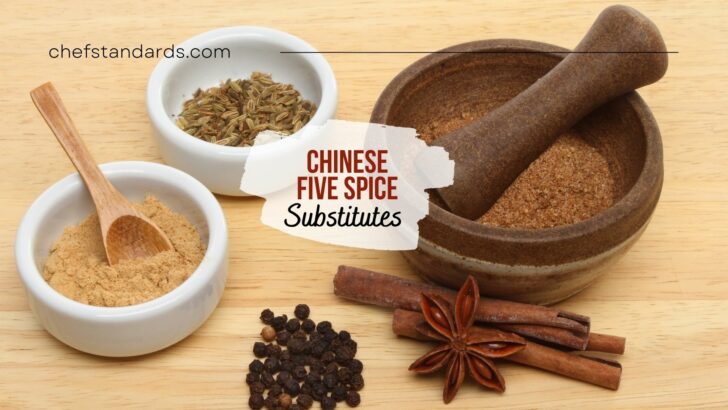In general, Chinese cuisine and Asian cuisine have so much to offer. However, their crown jewel is definitely their use of various flavorful spices.
One of the most complex and versatile is the so-called Chinese five spice, which unites five flavors into the one unique and complex flavor profile that is capable of enriching so many types of dishes.
Chinese cinnamon, star anise, fennel seeds, Sichuan peppercorns, and cloves are there to provide you with sweet, bitter, sour, salty, and savory flavors, a unique combo that is hard to find.
However, although you can find this spice at most grocery stores nowadays, it is not out of hand to know some good substitutes for Chinese five spice. You never know when you’ll need one.
1. Garam Masala
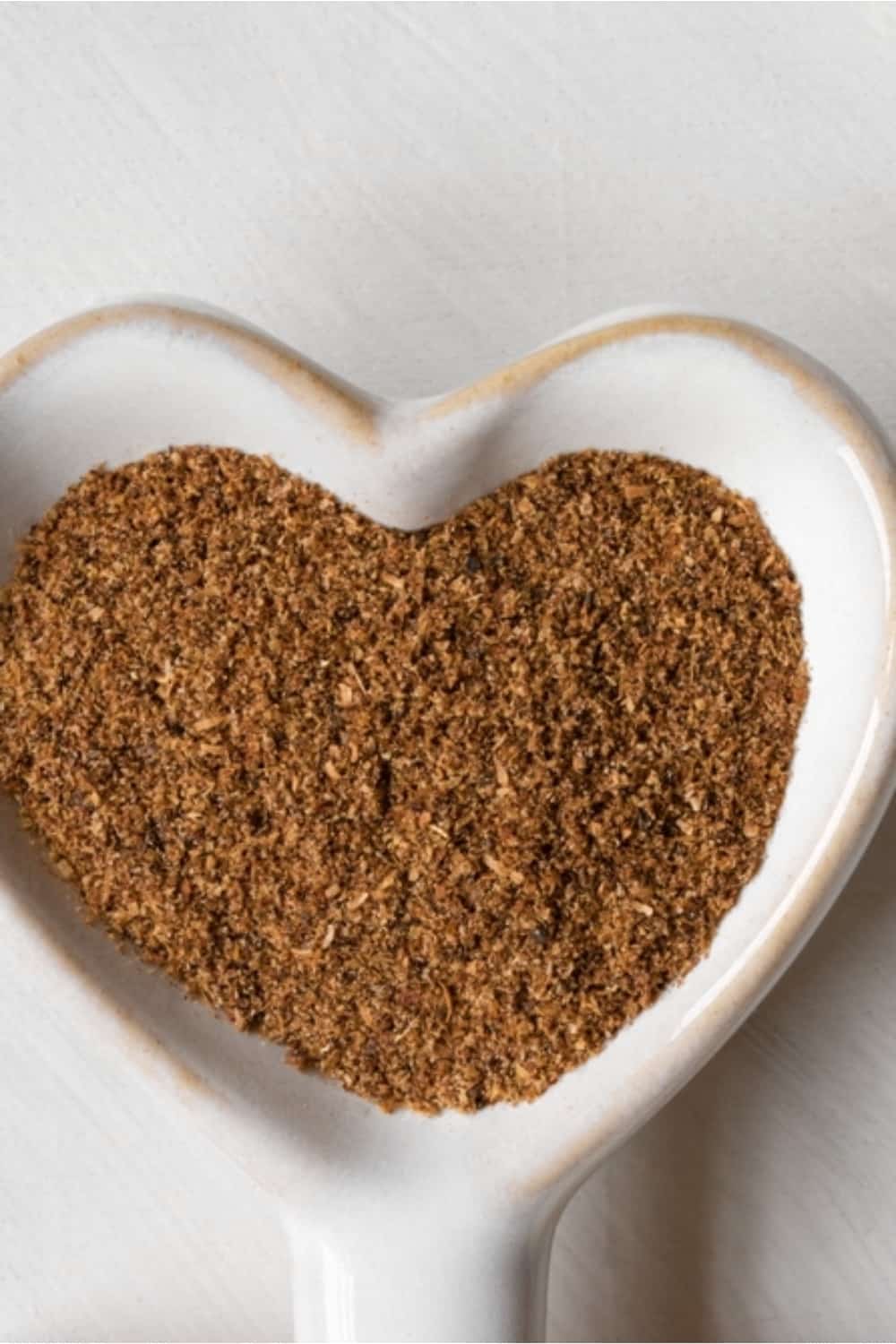
Garam masala, a popular spice blend that translates to “hot mixture” in Hindi, is a hot and spicy combination of many spices, including coriander, cumin, cardamom, cloves, black pepper and cinnamon.
Considering the types of spices it contains, it is no surprise that it is a great Chinese five spice alternative.
Similarities:
• Both garam masala and Chinese five spice are spice blends that are used to add depth and flavor complexity to dishes.
• Both spice blends offer aromatic qualities that enhance the overall sensory experience of the food. They contribute to the fragrance and aroma of the dishes they are used in.
• They are also very versatile ingredients and can be used in almost every cuisine around the world.
Differences:
• Although the flavor profiles are similar to some extent, they are not the same. Unlike garam masala, Chinese five spice has distinct elements like star anise, Sichuan peppercorns, and Chinese cinnamon, which contribute to its unique flavor profile.
• Contrary to Chinese five spice, Garam masala can be quite strong and robust in flavor. If used in excess or in delicate dishes, it has the potential to overpower other ingredients and dominate the overall taste of the dish.
• Garam masala is commonly associated with Indian cuisine, so using it as a substitute for Chinese five spice may not be suitable for certain Chinese dishes that rely on the specific flavors of Chinese five spice for authenticity.
How To Use As A Substitute:
Garam masala alone can be a great substitute for Chinese five spice, but if you really want to make it thrive in your dish, you need to do one adjustment.
It contains cinnamon, but the typical cinnamon flavor is not so dominant.
So, my advice is to add an extra pinch of ground cinnamon and then you can freely use it in a 1:1 ratio.
As a substitute for Chinese five spice, you can use garam masala in recipes such as stir-fries, curries, marinades, roasted vegetables, or even as a seasoning for grilled meats.
2. Baharat
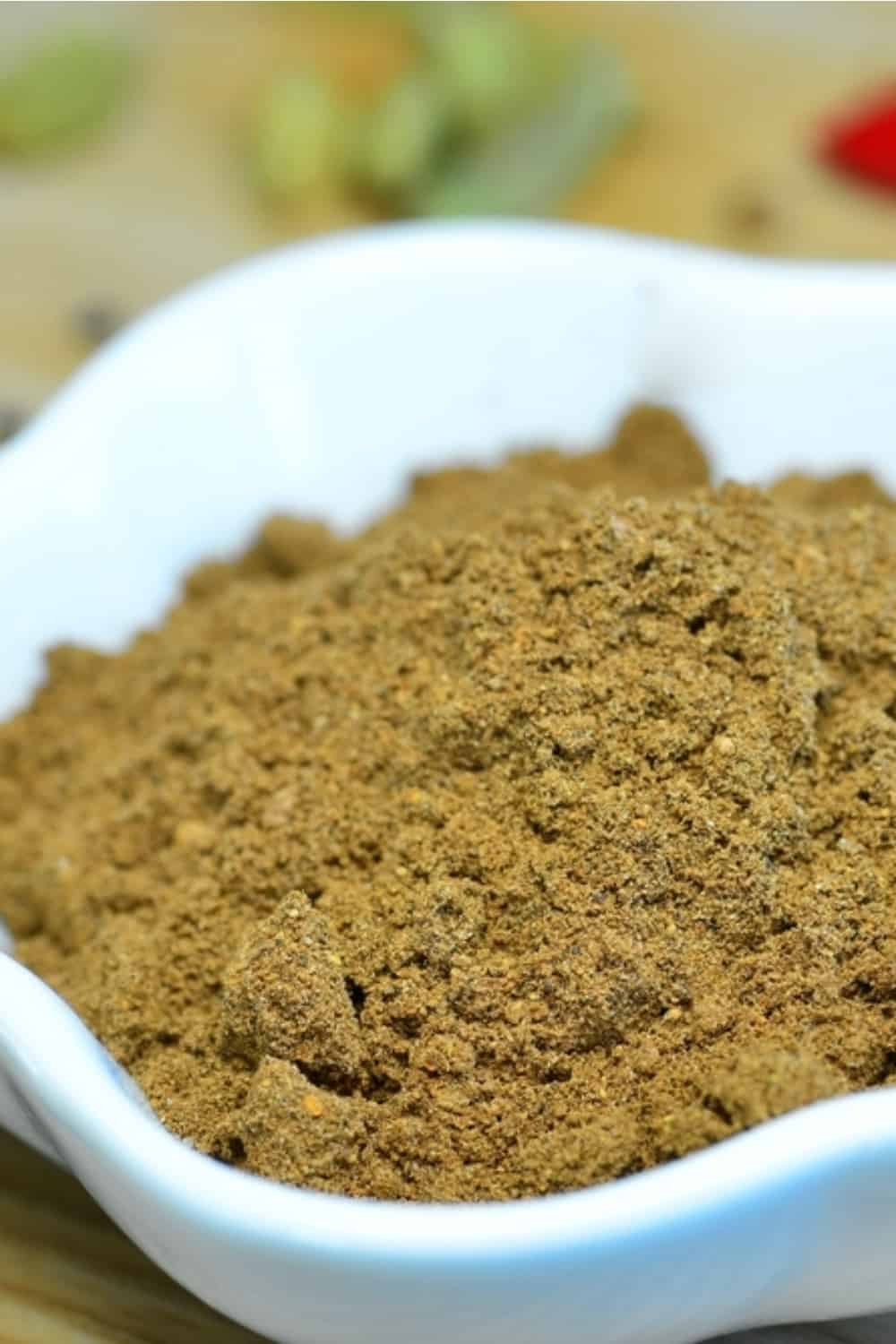
Baharat is another popular spice blend used in Middle Eastern cuisine. The term “baharat” translates to “spices” in Arabic, and the blend itself represents a combination of various aromatic and flavorful spices.
It can be a decent substitute for Chinese five spice in certain dishes.
Similarities:
• Like Chinese five spice, baharat offers a rich and complex flavor profile with a harmonious blend of spices. It combines elements of warmth, sweetness, earthiness, and subtle spiciness.
• Both spice blends offer aromatic qualities, contributing to the fragrance and aroma of the dishes they are used in.
Differences:
• The specific spices used in baharat and Chinese five spice differ.
Baharat commonly includes black pepper, cumin, coriander, paprika, cinnamon, cloves, nutmeg, and cardamom, while Chinese five spice includes star anise, Sichuan peppercorns, Chinese cinnamon, cloves, and either fennel seeds or Chinese star anise.
• Although there are similarities in their flavor profiles, there are also some major differences.
Baharat typically consists of warm and earthy spices, while Chinese five spice provides a balance of sweet, spicy, and slightly pungent flavors with a unique aromatic quality.
• Baharat typically offers a mild to moderate level of heat, depending on the amount of black pepper used. It combines warmth with subtle sweetness. Chinese five spice, on the other hand, is known for its sweet, spicy, and slightly pungent flavors.
How To Use As A Substitute:
When substituting baharat for Chinese five spice, start by using a smaller quantity of baharat than the amount specified for Chinese five spice in the recipe.
Baharat can have a strong flavor, so using it sparingly at first allows you to gauge its impact on the dish. You can always add more later on, if desired.
You also need to consider the recipe because it is not wise to use baharat in recipes where the exact flavor profile of Chinese five spice is critical.
However, you can use it in recipes such as roasted meats, stews, vegetable dishes, rice pilafs, or marinades.
My personal advice is to add a small amount of a complementary spice, such as star anise, Sichuan peppercorns, or Chinese cinnamon, to enhance the Chinese five spice flavor notes.
3. Star Anise
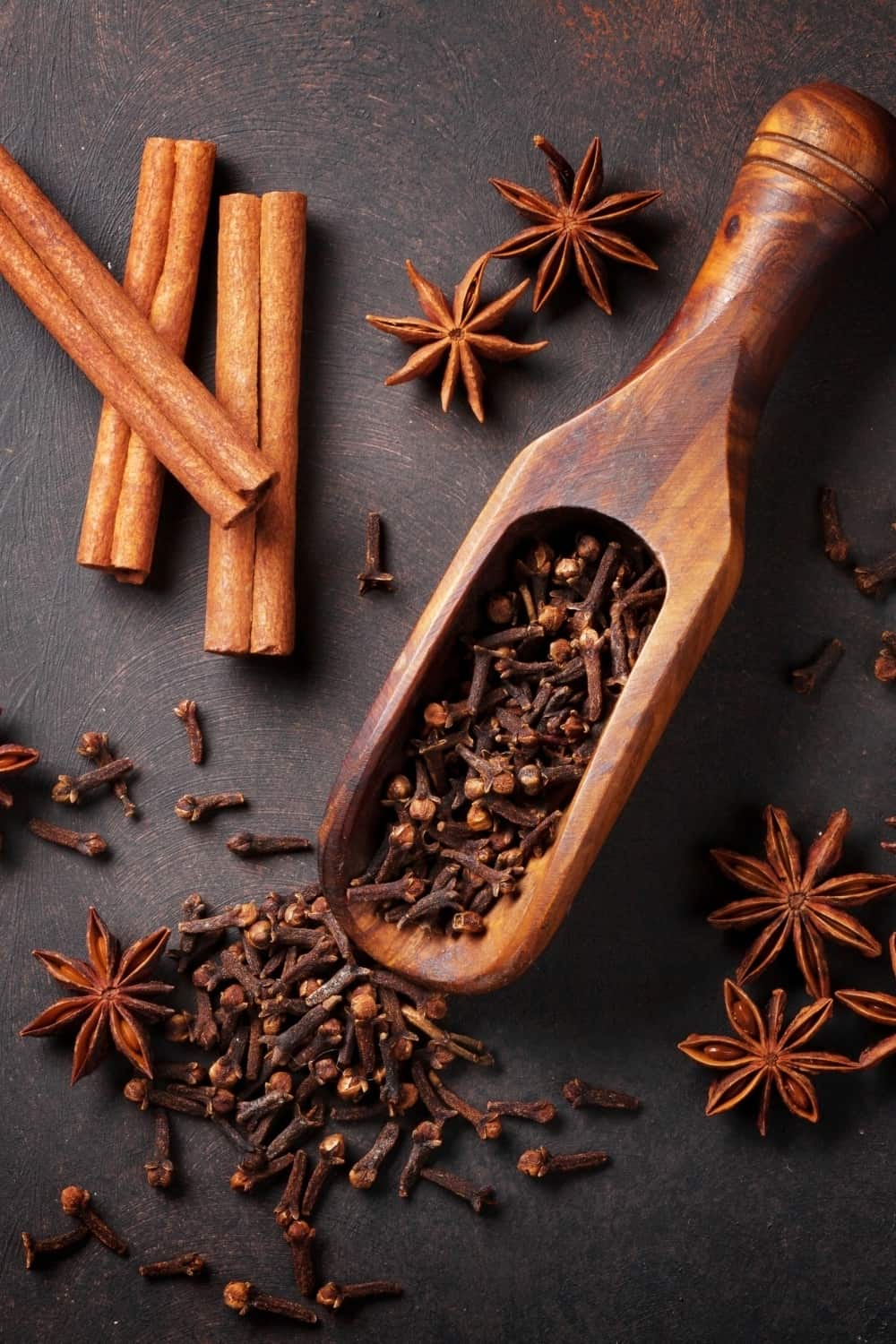
Star anise is a single spice that is named for its star-shaped appearance, which is formed by the seed pods that make up the fruit.
Besides cinnamon, it is one of the key ingredients of Chinese five spice, so it is no surprise that it can be a decent alternative.
Similarities:
• Both star anise and Chinese five spice share a similar flavor profile, with a predominant sweet and licorice-like taste. This flavor profile is distinctive and contributes to the aromatic and unique taste associated with Chinese cuisine.
• Other types of spices and spice blends offer unique aromatic qualities that enhance the overall sensory experience of the food. They have a fragrant scent that adds depth and complexity to dishes.
Differences:
• The first and most obvious difference is the fact that one is a spice and the other is a blend of spices.
• They share specific flavors because star anise is one of the main ingredients in Chinese five spice, but star anise also lacks the flavors from the other ingredients. This makes it less complex in flavor.
• Star anise is widely available as a standalone spice and can be found at most grocery stores and supermarkets.
Chinese five spice, being a blend, may require purchasing or preparing the individual spices and combining them in the correct proportions.
How To Use As A Substitute:
First, you have to know that you can use whole star anise and ground powder. In my opinion, it is better to use whole star anise, but it is sometimes easier to find the ground version.
You can use the ground version as a direct substitute.
On the other hand, if you choose to use whole star anise, add three whole pods to soups, stews, and braising liquids to replace one tablespoon of Chinese five spice.
It is also important that you remove the pods before serving your dish if you don’t want to end up with too strong flavor and a ruined texture.
I would also recommend you to experiment with other complementary spices, including small amounts of ground Sichuan peppercorns, Chinese cinnamon, cloves, and fennel seeds, to enhance the overall flavor.
However, this is up to you.
One of my favorite ways to use star anise is in a popular Indian beverage known as Chai.
4. Allspice
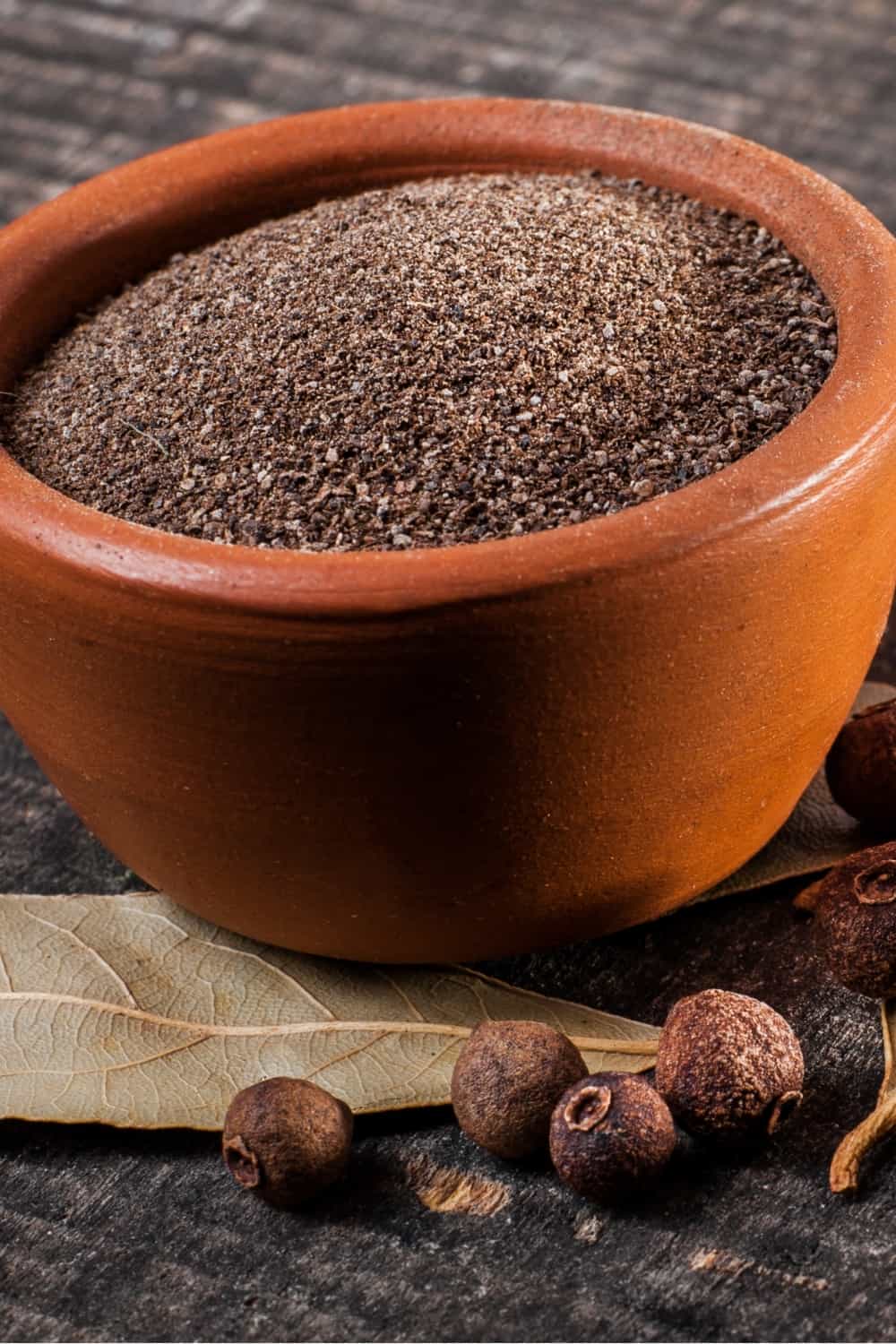
Many people find this confusing, but allspice is not a blend of different spices but rather a single spice. It is a spice derived from the dried berries of the Pimenta dioica tree, which is native to the Caribbean region, particularly Jamaica.
Similarities:
• Both allspice and Chinese five spice offer warm and aromatic flavors.
Allspice provides a combination of cloves, cinnamon, and nutmeg flavors, while Chinese five spice incorporates flavors from spices like cloves, cinnamon, and Sichuan peppercorns.
• Both spices are very versatile in cooking, i.e., they can be applied to both sweet and savory recipes, including marinades, stews, curries, and baked goods.
Differences:
• Since allspice is not a spice blend, it can not offer the flavor complexity of Chinese five spice.
• While both spices have warm and aromatic flavors, they differ in their specific taste profiles.
Allspice has a more pronounced flavor of cloves, cinnamon, and nutmeg, while Chinese five spice has a distinct combination of flavors, including the numbing heat of Sichuan peppercorns and the licorice-like notes of star anise.
How To Use As A Substitute:
Just like with star anise, you can also use both ground allspice and allspice berries. However, it is best to use dried berries.
If you choose to use ground allspice, you can use it in a 1:2 ratio.
On the other hand, if your preferred version is dried allspice berries, you can add a tablespoon to pickling or braising liquids.
If you use dried allspice berries in soups and stews, my advice is to tie them in a small muslin cloth bag or use a tea ball. After that, it is best to fish them out before serving.
Finally, if you want to enhance the flavors, consider adding other complementary spices.
For example, you can include a pinch of ground cloves, cinnamon, and Sichuan peppercorns to capture some of the unique elements found in Chinese five spice.
5. Cinnamon

There is not just one type of cinnamon but two, Ceylon cinnamon and Cassia cinnamon. Cassia cinnamon is mostly used in Chinese five spice, but Ceylon cinnamon can also be a decent alternative.
Since cinnamon flavor is mostly dominant in Chinese five spice, it is no surprise that it can be a great substitute as well. In the culinary world, cinnamon does not have limits, as it can be used in many recipes, including cocktails, gluten-free banana pancakes, smoothies, and so on.
Similarities:
• Since the most dominant flavor in Chinese five spice is that of cinnamon, the biggest similarity is very obvious.
• Both cinnamon and Chinese five spice are versatile ingredients that can be used in a variety of dishes. Cinnamon is commonly used in both sweet and savory recipes, including baked goods, desserts, curries, stews, and beverages.
Chinese five spice is specifically tailored to Chinese cuisine but can also be used in a range of dishes, such as stir-fries, roasted meats, and braises.
Differences:
• Cinnamon is a single spice that provides a distinct flavor on its own. Chinese five spice, on the other hand, is a blend of multiple spices that creates a more complex flavor profile.
• Cinnamon is widely used in various cuisines around the world, while Chinese five spice is specifically associated with Chinese cuisine and is a key component in many traditional Chinese dishes.
• Although they are both versatile ingredients, they are not to be used in all recipes interchangeably.
How To Use As A Substitute:
When substituting cinnamon for Chinese five spice, it is best to use ground cinnamon. Since the most dominant flavor of Chinese five spice is that of cinnamon, you can freely use it in a 1:1 ratio.
However, there is also nothing wrong in using whole cinnamon quills. If you have some, it is important that you use one stick for each tablespoon of Chinese five spice.
In general, you can add cinnamon in many dishes that require Chinese five spice, including soups, stews, and braising liquids.
However, you have to know that it is important that you remove the sticks, if you are using them, before serving the dish. This is especially the case with soups.
6. Garam Masala & Star Anise

You already know that garam masala and star anise alone can be great substitutes for Chinese five spice, but their combination really makes a difference. Namely, the flavor profile will be quite similar and that is the most important factor.
Similarities:
• The flavor profiles of garam masala and star anise alone are quite similar to that of Chinese five spice. However, since both types of spices are Chinese five spice, this flavor combo is even more similar.
• Like with garam masala, you can use this blend of spices in a wide range of dishes, including curries, stews, marinades, and roasted vegetables.
Differences:
• While the blend of garam masala and star anise can offer a delicious and unique flavor profile, it deviates from the traditional flavor profile of Chinese five spice.
• This blend may also introduce different aromatic notes that can be distinct from the original Chinese five spice.
How To Use As A Substitute:
In order to use it as a substitute, you first need to correctly make the blend from these two ingredients.
For the purpose of using it as a Chinese five spice substitute, it is best to mix ¼ ground star anise and ¾ teaspoon garam masala.
Use that amount for every 1 teaspoon of Chinese five spice.
You can use this substitute in recipes such as stir-fries, braised dishes, and other Chinese-style preparations.
7. Ras El Hanout
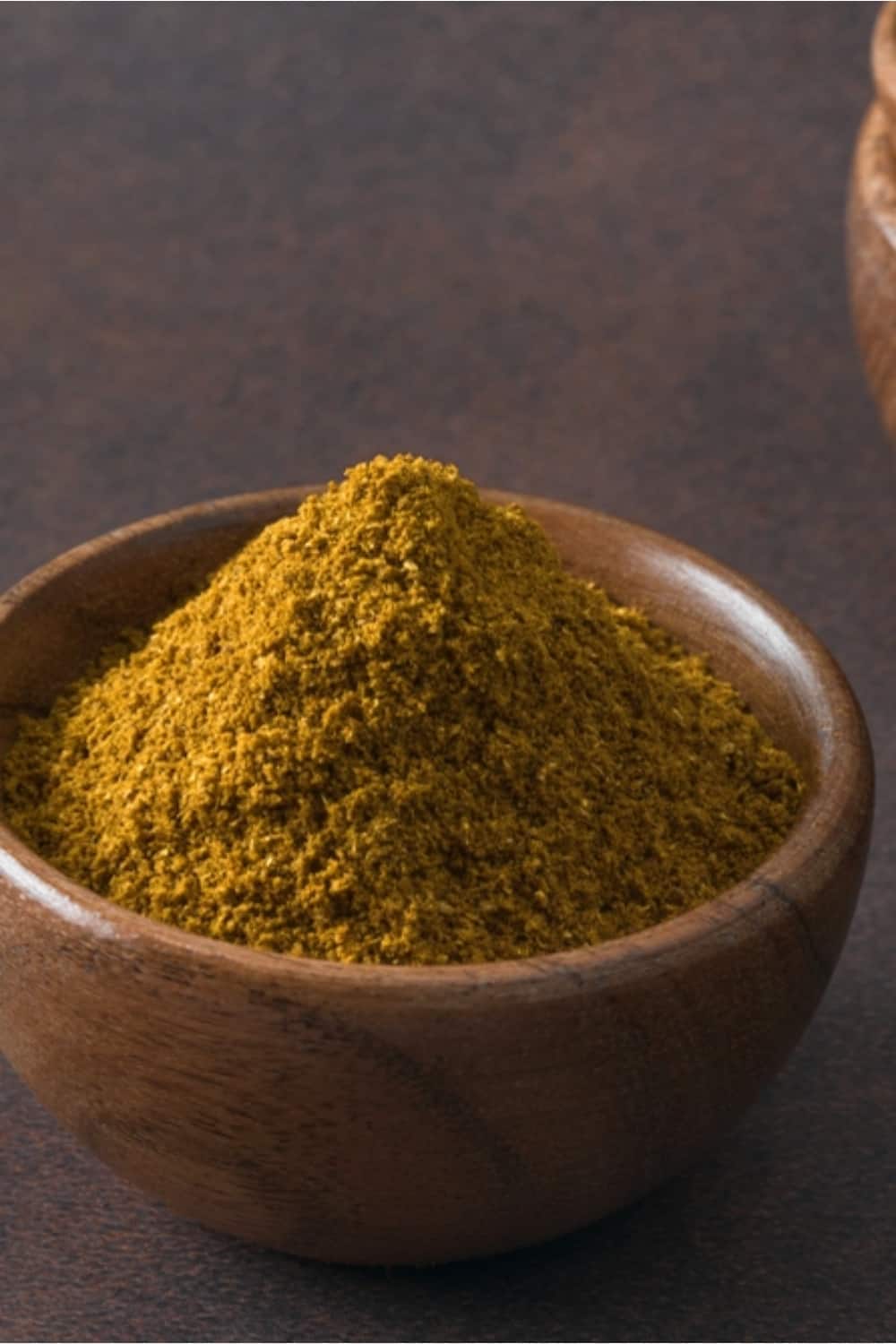
Ras el hanout is a flavorful spice blend that comes from North African cuisine, and is mostly used in Moroccan and Tunisian dishes. Translated from Arabic, it means “head of the store”, indicating that it is a premium blend of the best spices available.
Similarities:
• Like Chinese five spice, Ras el hanout is a spice blend that consists of a combination of various spices and herbs.
• Since it contains various spices and herbs, it also offers a complex and aromatic flavor profile that can elevate the taste of your dishes.
Differences:
• Unlike Chinese five spice, Ras el hanout can vary widely in its spice composition.
While it commonly includes spices like cumin, coriander, turmeric, ginger, and cinnamon, it sometimes also includes cardamom, paprika, nutmeg, allspice, and cloves, among others.
• Chinese five spice offers a distinct flavor profile with a dominant sweet and warm taste from the presence of cinnamon and star anise.
Ras el hanout, on the other hand, offers a more diverse and complex flavor profile with a combination of earthy, warm, floral, and slightly spicy flavors.
• Finally, Ras el hanout can not be used in all types of dishes where Chinese five spice is required.
How To Use As A Substitute:
Ras el hanout is typically used as a delicious rub for meat or fish and it can also add flavor to simple couscous, pasta, or rice dishes.
When substituting for Chinese five spice, you can use it in 1:1 ratio. However, you have to know that it lacks the specific anise flavor associated with Chinese five spice.
So, it is not out of hand to add a pinch of ground anise or fennel if you have some on hand.
Also, you can grind it in a spice grinder for a finer texture if you think it is too coarse.
See Also: 10 Substitutes For Sesame Seeds For Every Opportunity
8. Homemade Chinese Five Spice
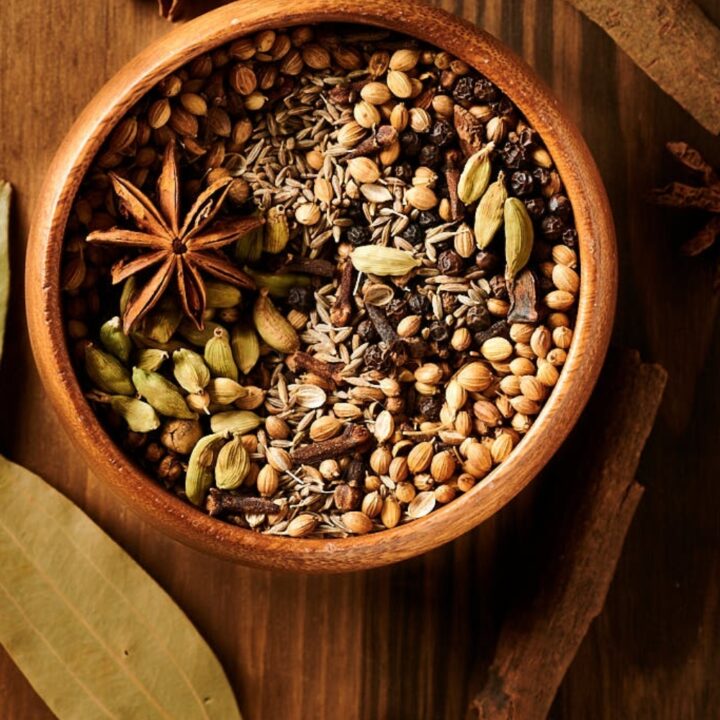
Homemade Chinese Five Spice
In the end, if you only believe in Chinese five spice, you can always make some of your own. Of course, you'll need a few ingredients and some basic knowledge of making it the right way.
Ingredients
- 2 tablespoons ground cinnamon
- 1 tablespoon ground cloves
- 1 tablespoon ground fennel seeds
- 1 tablespoon Sichuan peppercorns (or regular black peppercorns)
- 1/2 tablespoon ground star anise
Instructions
- Toast the spices (optional): Toasting the whole spices before grinding them can enhance their flavor. Heat a dry skillet over medium heat and add the whole cloves, fennel seeds, and Sichuan peppercorns. Toast them for a few minutes, stirring occasionally, until fragrant, but be careful not to burn them. Remove them from the heat and let them cool.
- Grind the spices: Once the toasted spices have cooled, grind them into a fine powder using a spice grinder, mortar and pestle, or a clean coffee grinder. If using pre-ground spices, you can skip the toasting step.
- Combine the ground spices: In a bowl, combine the ground cinnamon, ground cloves, ground fennel seeds, ground Sichuan peppercorns, and ground star anise. Mix well to ensure all the spices are evenly distributed.
- Store the blend: Transfer the Chinese five spice blend to an airtight container, such as a glass jar or spice jar. Store it in a cool, dark place. If properly stored, the blend can retain its flavors for several months.
Notes
While using pre-ground spices is convenient, using whole spices and grinding them yourself just before making the blend can yield a fresher, more flavorful result.
Chinese five spice is a versatile blend, and you can customize it further by adding or substituting spices. For example, you can include ground ginger, ground cardamom, or ground nutmeg for additional flavor variations.


